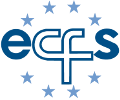Evaluating pulmonary inflammation with radiolabeled fluorodeoxyglucose and positron emission tomography in patients with cystic fibrosis
D. Chen, J. Pittman, D. Rosenbluth, T. Ferkol, S. Schuster
Washington University School of Medicine, St Louis, United States
Introduction: Currently, few effective, non-invasive methods exist to monitor disease activity in cystic fibrosis (CF), particularly neutrophilic inflammation. Positron emission tomography (PET) imaging with radiolabeled fluorodeoxyglucose (FDG) has recently been used to detect acute neutrophilic inflammation in a variety of settings, including lung disease. This study was designed to evaluate if FDG-PET imaging could be used to monitor lung inflammation in CF.
Methods: We studied 6 stable CF patients (ages 19-50 years). Patients with diabetes were excluded. FDG (~10 mCi) was administered intravenously, followed by 66 min of dynamic image acquisition. The influx constant (K), a measure of net FDG uptake in the tissue, was calculated by Patlak graphical analysis. The tissue/plasma activity ratio (TPR), a correlate of the K , was also calculated at the end of the scan.
Results: Mean forced expiratory volume in 1 s (FEV-1) at the time of study was 2.39±0.10 l (64±21% predicted). The mean K for all lung regions was 15±9x10-4ml blood/ml lung tissue/min (normal range: 3±8x10-4). Mean TPR was 0.36±0.12 ml blood/ml lung and correlated strongly with K (R2=0.72). Mean neutrophil count from BAL was 4.6±7.8x10-3 cells/mm-3(67±20% of total cell count) and was also positively correlated with K and TPR(R2=0.83 and 0.79, respectively). The annual rate of FEV-1 decline also correlated with K (R2=0.72).
Conclusion: PET imaging may be an useful, non-invasive alternative to BAL to measure pulmonary neutrophilic inflammation in CF. The TPR may be a simple and effective alternative to dynamic imaging.
Supported by grants from the National Institutes of Health (HL64044) and Cystic Fibrosis Foundation.
